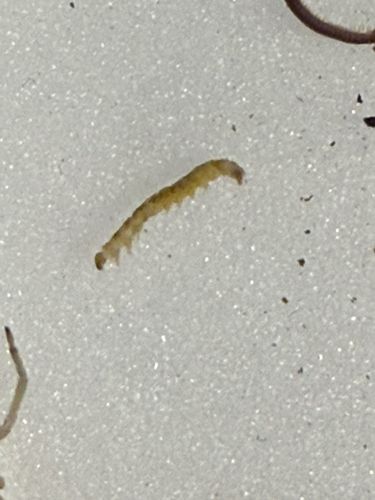Fungus Gnat Larva
Scientific Name: Sciaridae (various species), Mycetophilidae (various species)
Order & Family: Order: Diptera, Families: Sciaridae, Mycetophilidae
Size: 2-10 mm in length

Natural Habitat
Damp, organic-rich environments such as potting mix, decaying leaf litter, compost, and moist soil. Commonly found in overwatered houseplants.
Diet & Feeding
Primarily feed on fungi, algae, and decaying organic matter in the soil. Some species may also feed on delicate root hairs of plants, especially seedlings.
Behavior Patterns
Larvae are legless, worm-like, and translucent or whitish with a distinct black head capsule. They spend their entire larval stage in the soil or growing medium. They are quite active, wriggling through the substrate. They are generally numerous and can be an indicator of overly wet conditions.
Risks & Benefits
Risks: Can damage plant roots, particularly young seedlings, leading to stunted growth or wilting. Large infestations can be problematic for horticulture. While generally not harmful to humans, very large numbers indoors can be a nuisance. Benefits: They play a role in decomposition, breaking down organic matter. They can be a food source for other beneficial organisms in the soil ecosystem.
Identified on: 11/20/2025